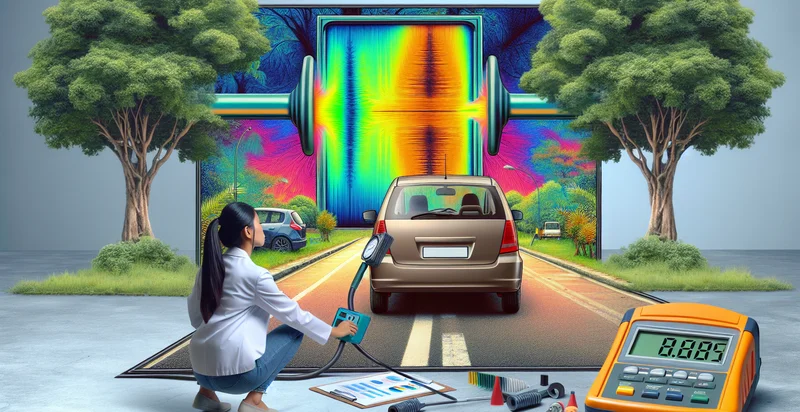Identify vehicle noise level
using AI
Below is a free classifier to identify vehicle noise level. Just upload your image, and our AI will predict the noise level of different types of vehicles - in just seconds.

Contact us for API access
Or, use Nyckel to build highly-accurate custom classifiers in just minutes. No PhD required.
Get started
import nyckel
credentials = nyckel.Credentials("YOUR_CLIENT_ID", "YOUR_CLIENT_SECRET")
nyckel.invoke("vehicle-noise-level", "your_image_url", credentials)
fetch('https://www.nyckel.com/v1/functions/vehicle-noise-level/invoke', {
method: 'POST',
headers: {
'Authorization': 'Bearer ' + 'YOUR_BEARER_TOKEN',
'Content-Type': 'application/json',
},
body: JSON.stringify(
{"data": "your_image_url"}
)
})
.then(response => response.json())
.then(data => console.log(data));
curl -X POST \
-H "Content-Type: application/json" \
-H "Authorization: Bearer YOUR_BEARER_TOKEN" \
-d '{"data": "your_image_url"}' \
https://www.nyckel.com/v1/functions/vehicle-noise-level/invoke
How this classifier works
To start, upload your image. Our AI tool will then predict the noise level of different types of vehicles.
This pretrained image model uses a Nyckel-created dataset and has 9 labels, including Extremely Loud, Loud, Moderate, Moderately Loud, Moderately Quiet, Quiet, Silent, Very Loud and Very Quiet.
We'll also show a confidence score (the higher the number, the more confident the AI model is around the noise level of different types of vehicles).
Whether you're just curious or building vehicle noise level detection into your application, we hope our classifier proves helpful.
Related Classifiers
Need to identify vehicle noise level at scale?
Get API or Zapier access to this classifier for free. It's perfect for:
- Urban Noise Monitoring: City authorities can utilize the vehicle noise level identifier to monitor and manage urban noise pollution. By identifying vehicles that exceed acceptable noise levels, cities can enforce regulations and prioritize interventions in areas with high noise complaints.
- Fleet Management: Transport companies can implement this technology to monitor the noise levels of their vehicle fleet. By identifying excessively noisy vehicles, companies can schedule maintenance or replacements, thereby improving service quality and reducing noise complaints from the public.
- Traffic Safety Analysis: Traffic safety agencies can analyze vehicle noise levels as part of broader safety metrics. Increased noise levels can correlate with aggressive driving behaviors, prompting further investigation into potential safety concerns in specific areas.
- Insurance Assessment: Insurance companies can use noise level data as part of their vehicle assessment criteria. Vehicles identified as excessively noisy might be subject to higher premiums or additional scrutiny due to potential modifications or performance issues.
- Environmental Impact Studies: Researchers can employ the vehicle noise level identifier to assess the environmental impact of vehicular noise on wildlife and communities. This data can help advocate for specific planning regulations or conservation efforts in sensitive areas.
- Public Awareness Campaigns: Local governments can leverage noise level data to inform the public about noise pollution and its impact. Campaigns can focus on encouraging quieter vehicles and providing information about the benefits of reduced noise levels for urban living.
- Compliance and Regulation Enforcement: Regulatory bodies can integrate the technology to ensure compliance with local noise ordinances. Automated monitoring systems can flag vehicles that exceed noise thresholds, streamlining the enforcement process and promoting adherence to noise regulations.


